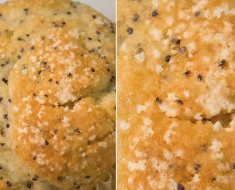
The common symptom of tics for those living with Tourette syndrome can sometimes interrupt a person’s life, and for some, the condition also may come with other neurodevelopmental and psychiatric conditions. New guidelines by the American Academy of Neurology outline effective ways to treat the symptoms that range from new therapies to holistic care.
Dr. Joseph Jankovic, professor of neurology and director of the Parkinson’s Disease Center and Movement Disorders Clinic at Baylor College of Medicine, is one of the authors of the guidelines, published today in the online issue of Neurology, the medical journal of the AAN.
Tourette syndrome is a common neurodevelopmental disorder but the causative gene or genes have not yet been discovered despite extensive genetic research. While the motor and phonic tics typically start in childhood, Tourette is a life-long condition in most patients, often accompanied by attention deficit, obsessive-compulsive disorder and other behavioral co-morbidities.
“If the tics are not interfering with patient’s functioning or social interactions, behavioral therapy, if performed by a trained therapist, can be helpful. However, by the time patients with Tourette syndrome are referred to our movement disorders clinic at Baylor, some form of pharmacologic therapy is often needed,” said Jankovic, who also is Distinguished Chair in Movement Disorders at Baylor. “There are many therapeutic options available for the treatment of Tourette, but the most important message from the guidelines is that therapy of Tourette must be individualized.”
To create the guidelines, the authors reviewed the latest scientific evidence and outlined methods to support accurate diagnosis, ongoing medical assessment of the severity of tics, and therapies that include holistic care, behavioral strategies and medications to manage tics over time.
Lead author Dr. Tamara Pringsheim, with the University of Calgary in Alberta, Canada and a Fellow of the AAN, said tics rarely disappear but may get better overtime, so management is key.
Key recommendations include:
- Watching and waiting as a management strategy could work for those whose tics are not disrupting everyday life. This should be done under consultation with a doctor who can educate the person to understand and cope with what is going on.
- Treatments must be individualized and based on a collaborative decision by those living with Tourette syndrome, caregivers and doctors.
- Doctors should talk to children and caregivers about how tics could improve with age for some.
- For those whose tics are disruptive, a first treatment option to consider is Comprehensive Behavioral Intervention for Tics (CBIT). CBIT combines relaxation training, habit-reversal training and behavioral therapy.
- Patients with tics should be evaluated for other commonly coexisting conditions such as attention deficit hyperactivity disorder, obsessive-compulsive disorder and mood and anxiety disorders. For some, one medication can help lessen symptoms for both issues. In some cases, antipsychotic medications for tics are prescribed but if other side effects associated with these drugs are seen, patients must be weaned off under a doctor’s supervision to prevent abnormal movements seen when medications are stopped too quickly.
- Botulinum toxin given by injection into the muscles might be an option for older teenage or adult patients.
- Deep Brain Stimulation is an option for those who are resistant to medical and behavioral therapy, but they must first be screened by a mental health professional and continue to be monitored throughout DBS treatment.
- The guidelines take into account the experiences of adults who have, on their own, treated their Tourette syndrome tics using cannabis. A person who chooses to do this should talk to his or her doctor. If a physician is not authorized to supervise the use of cannabis, the physician should recommend a doctor who is authorized and only in states where cannabis is legal.
Source: Read Full Article





